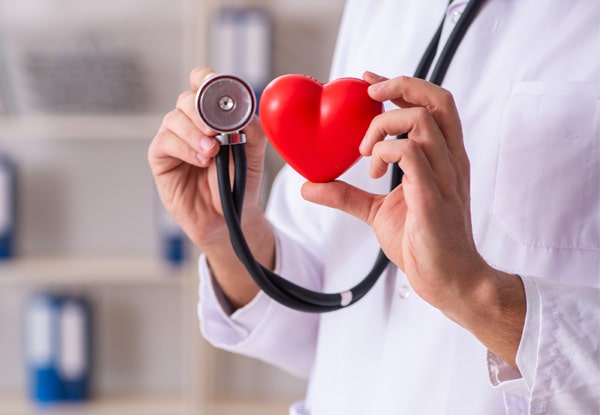Different Tests That Can Help To Confirm Coronary Artery Disease

The heart is the major organ in the body, which is responsible for pumping oxygenated blood to different parts of the body and purify deoxygenated blood. For the whole process of circulation to run smoothly, it is important that the arteries and the veins also work without any problems. However, medical research and survey reports have come up with threatening news that coronary artery diseases are on the rise in people all over the world. Various factors are responsible for the same – right from diet to lifestyle, from stress to hereditary factors, etc. Understanding the condition of the heart is very important, particularly after a certain age – though now heart ailments are seen in people of all age groups.
In case you feel any kind of chest discomfort, chest pain, shortness of breath, etc. make sure that you visit the doctor. The doctor will carry out a physical examination of you. He might also suggest some tests and investigations ascertain if you have any kind of coronary artery disease. Mentioned below are some such tests and investigations which can help in confirming if you have coronary artery disease:
Blood tests – In case of a heart attack, the heart muscles get damaged, and various kinds of substances are released into the blood from the body. The levels of these substances can be measured by blood tests, and one can know the extent of heart damage. Levels of troponin are checked. Apart from this fasting glucose levels, PP glucose levels, cholesterol, triglycerides, etc. are also measured along with testing blood fats.
Blood pressure monitoring – Usually, patients with cardiac problems will have high blood pressure levels. The doctor might arrange to monitor your blood pressure for 24-hours. This helps in monitoring the pressure during the day to day activity as well as during sleep and rest. Many doctors might also suggest taking blood pressure readings 3-4 times a day.
Chest X-Ray – Chest X-ray helps in taking images of the organs and structures inside the chest, like the heart and the lungs.
Echocardiogram (ultrasound of the heart) –With echocardiogram, the doctor comes to know if there is any kind of problem in the valves and chambers of the heart. Also, it gives a clear picture as to how strongly the heart pumps blood. It helps in detecting areas in the heart where blood supply is reduced.
Electrocardiogram (ECG) – Popularly known as ECG, electrocardiogram helps in reading the electrical impulses of the heart. Wire leads and small sticky dots are put on the chest, on the legs and the arms of the patient. All these leads are then attached to the ECG machine. The electrical impulses are recorded, and they are then printed out on a paper. Along with diagnosing a heart attack, an ECG is also used for diagnosis of abnormal heart rhythms known as arrhythmia in medical terminology.
Electrophysiology studies – A computer is used in Electrophysiology studies as it helps in finding out about abnormal heartbeats (arrhythmia). Special tubes, which are known as catheters, are inserted into the heart via a vein in the leg. The heart’s electrical activity is recorded by the catheters along with testing the heart’s response to various stimuli. The electrical response of the heart to the stimuli helps in determining the cause and the type of arrhythmia.
MRI – The full form of MRI is Magnetic Resonance Imaging. Powerful radio waves and magnets are used for creating detailed images of the heart on the computer screen. Still, as well as moving images of the heart can be captured with MRI. There is no kind of radiation in this test. There is a drumming kind of noise which can be heard when the MRI is in progress. There are some cases in which a special dye is used for making parts of the heart and coronary arteries visible. The current structure of the heart can be seen clearly by the doctors, along with its functioning.
Stress test – Stress test is one of the most commonly carried out tests for ascertaining the condition of the heart and how it works. People who experience problems while walking or exercising are usually recommended this test. During the test, the doctor will ask the patient to ride a stationary bike or walk on a treadmill during an ECG. This is referred to as an exercise stress test in many places. In many cases, medication is used for stimulating the heart if exercise is not an option.
Heart scan – Computerized tomography (CT) is a great way in which doctors can find if there are calcium deposits in the arteries, and this can lead to narrowing of the blood vessels. If the amount of calcium found in the arteries is substantial, chances of coronary artery diseases are high. Sometimes, a CT coronary angiogram also needs to be done for generating images of the heart arteries. A contrast dye is injected intravenously during the process of CT scan.
Angiogram – This is probably the ultimate test which needs to be done for detecting coronary artery disease. A coronary angiogram, cardiac catheterization is a small tube (also known as a catheter) is inserted in an artery in the arm, groin or wrist area. The catheter is moved up the artery until it reaches the heart. A special dye is injected into the coronary artery, and the X-ray is done. It helps to detect the blockages in the artery. It also shows how well the heart pumps blood.